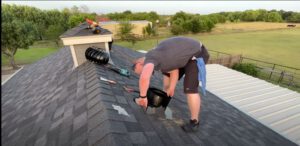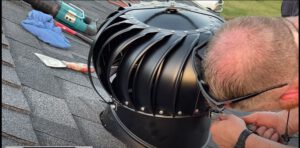Can I install a skylight on my Australian roof?
Posted on: June 13, 2023, by : roofcont Adding a skylight to your Australian home not only brings in natural light, but it also creates a sense of openness, making your living space more appealing. However, skylight installation requires careful planning and consideration. This article provides an extensive guide on what you need to know if you’re contemplating adding a skylight to your Australian roof.
Adding a skylight to your Australian home not only brings in natural light, but it also creates a sense of openness, making your living space more appealing. However, skylight installation requires careful planning and consideration. This article provides an extensive guide on what you need to know if you’re contemplating adding a skylight to your Australian roof.
What Is A Skylight?
A skylight is an opening in a roof or wall that allows natural light to enter the interior of a building. Skylights come in a variety of sizes and shapes, allowing you to customize the look of your home according to your taste. They can be fixed or operable (opening) and may be manually operated using hand cranks or motors.
Feasibility of Skylight Installation
Before delving into the installation process, the first step is to assess whether your roof is suitable for a skylight. Most roofs can accommodate a skylight, but the specifics of installation vary based on roof type. For flat roofs or those with a slight pitch, a curb-mounted skylight is appropriate. On the other hand, deck-mounted skylights are better suited for roofs with a steeper pitch. Also, consider internal factors such as the location of wiring, plumbing, and air conditioning ducts, which could influence where the skylight can be installed.
Choosing the Right Skylight
There is a wide range of skylights available, each with different features and benefits. The most common types include ventilated skylights that can be opened to let in fresh air, fixed skylights that cannot be opened but allow light in, and tubular skylights that are ideal for smaller spaces. Consider factors like the room’s size, the amount of light needed, energy efficiency, and your budget when choosing a skylight.
Skylight Placement
The placement of your skylight plays a crucial role in maximizing its benefits. North-facing skylights provide cool illumination, while those facing east offer morning light. South-facing skylights provide the most winter sunlight but could lead to overheating in summer, while west-facing ones offer afternoon light. To achieve balanced light throughout the day, consider multiple skylights in different parts of the roof.
Installation Process
Installing a skylight involves several steps. First, the desired location is marked out on the roof, and the shingles in that area are removed. A hole is then cut into the roof, and the skylight is secured into place. Flashing is applied to ensure a watertight seal, and the shingles are replaced. Internally, a shaft is built from the ceiling to the skylight to direct the light into the room. Keep in mind, professional installation is highly recommended due to the complexities involved in the process.
Energy Efficiency
 Skylights can have a significant impact on your home’s energy efficiency. While they can provide warmth in winter, they can also cause overheating in summer. Look for energy-efficient skylights with double glazing, low-emissivity coatings, and proper insulation to optimize thermal comfort while minimizing energy costs. Some skylights also come with built-in blinds that can be closed to reduce heat gain.
Skylights can have a significant impact on your home’s energy efficiency. While they can provide warmth in winter, they can also cause overheating in summer. Look for energy-efficient skylights with double glazing, low-emissivity coatings, and proper insulation to optimize thermal comfort while minimizing energy costs. Some skylights also come with built-in blinds that can be closed to reduce heat gain.
Waterproofing and Leak Prevention
One common concern with skylights is the potential for leaks. Proper installation and waterproofing are critical to prevent this. A well-installed skylight should include flashing – a material that directs water away from the skylight and towards the roof’s surface. Regular maintenance and inspections can help detect potential leak points and allow for timely repairs.
Building Regulations
Australia has specific building regulations that dictate the installation of skylights. These regulations cover aspects like the skylight’s position, size, glazing, and energy efficiency. It’s crucial to consult with a professional or your local council to ensure your skylight installation adheres to these standards.
Maintenance
Skylights require regular maintenance to ensure they remain in good condition. This includes cleaning the glass, checking the seals and flashing for signs of wear and tear, and lubricating any moving parts on ventilated skylights. Regular maintenance not only prolongs the lifespan of your skylight but also helps maintain its performance and aesthetics.
Conclusion
Installing a skylight on your Australian roof can provide numerous benefits, from improved natural light to enhanced aesthetic appeal. However, careful consideration of various factors, including the feasibility of installation, skylight selection, placement, energy efficiency, waterproofing, and maintenance, is crucial to ensure your skylight adds value to your home. By following this comprehensive guide, you can look forward to enjoying the numerous benefits of having a skylight in your home.
